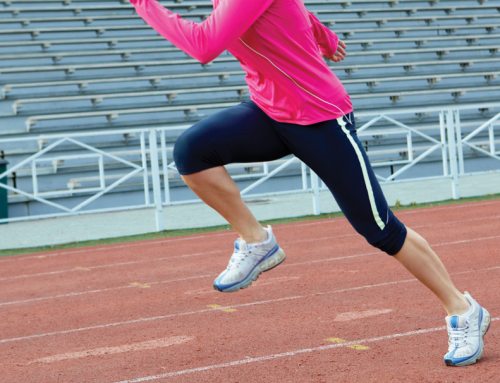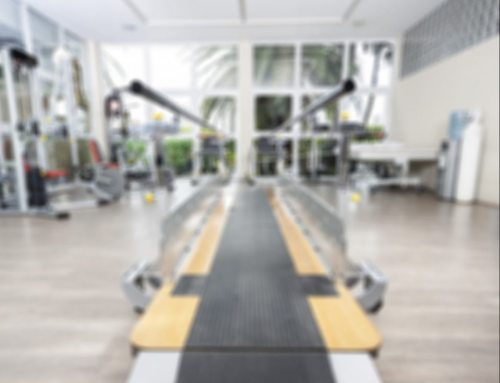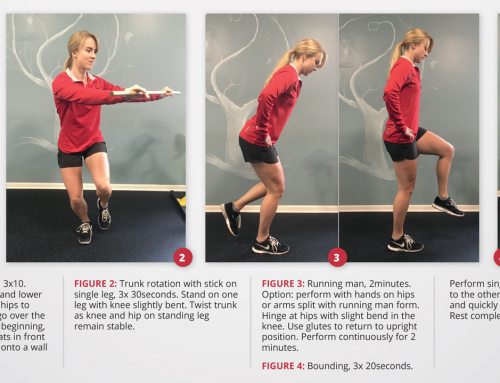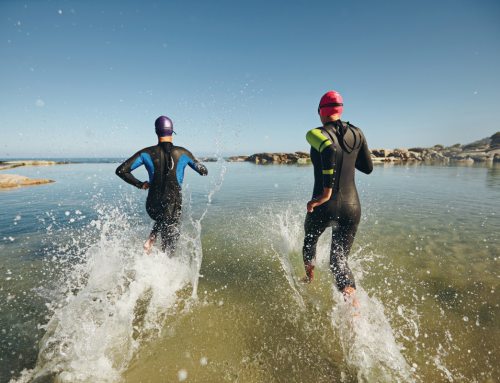By Brian Beatty
The goal of a triathlon transition is to move as quickly and efficiently as possible between the disciplines. A few simple moves can assist your body to transition smoothly.
Particularly challenging to the body is the T2 transition from the flexed and curled position on the bike into the extended and lengthened posture needed for efficient running. Any sustained activity creates a neuromuscular adaptation to the position that increases muscle efficiency for that particular position and activity. The more aero your bike position, the more tucked (flexed) your hip and spine are while creating power output. Being able to create power from your legs from a position of flexion is great for cycling, but not for running.
Two hallmarks of efficient running form are quick cadence and lengthening the stride behind the body. Quick cadence carries directly over from the bike. A long stride behind the body, extending your hip, is the postural opposite of the bike position. Efficiency in running is all about hip extension. We strive for a foot strike under our body and stride length pushing your leg behind. To help your body make this important cycling to running transition, try this.
Once you are in running shoes, let your first few strides be done in a walking lunge form. To focus on opening your hips, take a long step forward and drop the front leg into a partial squat while leaving the back foot on the ground longer than normal. Exaggerate contracting your glutes and your abdominals to be clear that you are pushing your pelvis forward as your leg goes back. The cycling posture will create a strong tendency for the spine to excessively arch and the pelvis to move back with the leg. Change it and your run will thank you. Swinging your arms opposite of the legs & reaching overhead can also be useful to both lengthen the upper portions of the deep hip flexors and to free the tension in the arms and shoulders.
Tight hips in running can create many negative impacts on form and performance. They can overload the work on the hamstrings, inhibit the ability for the gluteals to contract to power you forward and lead to over striding. Over striding can create increased impact strain on the joints as well as rob energy from your form. The investment of a few seconds of dynamic stretch in the start of run will return great rewards over the course of the run. Take as many strides as you need until you feel your back leg easily move behind you as you, then off you go.
This month’s core corner features a split stance squat. This is a great exercise to gain and maintain hip extension strength and mobility for an efficient running form.
# # #
Brian Beatty, physical therapist at Balanced Movement Studio is enthusiastically working on transitioning over two decades of teaching during one on one sessions into online products for endurance athletes through the Balanced Movement Online component of the website www.balanced-movement.com.






